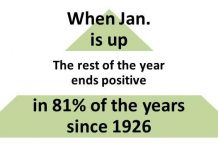Turmoil and uncertainty in international stock markets, particularly in the Eurozone, may have you feeling as exasperated and perplexed as Dustin Hoffman in the 1976 classic movie “Marathon Man.”
 Szell (Laurence Olivier): Is it safe?
Szell (Laurence Olivier): Is it safe?
Babe (Dustin Hoffman): I don’t know what you mean. I can’t tell you something’s safe or not, unless I know specifically what you’re talking about.
Szell: Is it safe?
Babe: Tell me what the “it” refers to.
Szell: Is it safe?
Babe: Yes, it’s safe, it’s very safe, it’s so safe you wouldn’t believe it.
Szell: Is it safe?
Babe: No. It’s not safe, it’s… very dangerous, be careful.
So is it safe to invest internationally?
As with the Babe’s source of frustration, it depends how you define “it.” In the case of international investing, diversification is the magic word that spells the difference. That and a patient outlook.
International stock markets have not been “safe” in the past year. For the year ending June 30, 2012, international stocks from economically developed countries were down nearly 14%. Likewise, stocks of less developed countries were down nearly 16%. In contrast, US stocks were up 5.5% during the same period.1
During times like these, having perspective helps.
Think long term.
It is a common prescription, but nevertheless worth remembering.
“Investors whose planning horizon is measured in decades should not be overanxious about the risk of common, short-term crashes. Instead, they should care more about long, drawn-out bear markets, which can be significantly more damaging to their wealth.”
— Cliff Asness, Roni Israelov and John Liew, International Diversification Works (Eventually), Financial Analysts Journal, May/June 2011
For the 32 years since 1970, the S&P 500 has returned 9.8%, or 0.9% above the 8.9% of the EAFE Index.
Diversify Globally.
Asness et al quoted above compared a diversified stock portfolio invested in only one country (the home market) against a globally diversified portfolio composed of 22 countries since 1950 during market crashes. The global portfolio was adjusted for each country to reflect the impact of currency and inflation. The findings are interesting.
Takeaways:
1) Global stock diversification provided little protection in market meltdowns.
Some critics of global diversification claim that it does not work because, in crises, stock markets often move in unison. From a short-term perspective on individual securities, they may have a point. But it is the long-term –measured in years – and a portfolio-wide outlook that matters. Because…
2) Global stock portfolios recovered faster.
After a crisis-induced sharp monthly decline, which may be accompanied by reduced tolerance for risk, performance continues to slide in worst-case scenarios. However, globally diversified portfolios fall less and turn up more quickly.
3) Global stock diversification reduced long-term losses.
In the worst five-year holding periods, globally diversified stock portfolios beat portfolios invested only in the home market by 18%. While they lost 39%, home market portfolios fell on average 57%.
Protect against catastrophe.
“Japan Inc.” provides a great example. Leveraging statistical process control for high-quality, low-defect products, Japanese companies dominated the 1980s as reflected by Time Magazine’s cover entitled, “How Japan Does It, The World’s Toughest Competitor.” Their stock market soared but, in the 1990s, lost 40% including an adjustment for inflation. In contrast, a Japanese globally diversified portfolio gained 131% according to Asness et al.
The point is that no one knows the future, but global diversification appears to be the safest means for managing a portfolio’s exposure to investment risk. In defining the type of risk we seek to avoid with global diversification, Elroy Dimson of the London Business School and coauthor of “The Triumph of the Optimists” said,
So, is it safe? In the short-term, no one knows. In the long-term, evidence and logic indicate that global stock diversification is your safest bet.
Copyright © 2012, Granite Hill Capital Management, LLC.
International stocks are represented by the Morgan Stanley Capital International (MSCI) Europe, Australasia, Far East or EAFE Index. Less-developed country stocks are represented by the MSCI Emerging Markets Index. US stocks are represented by the S&P 500 Index.
This blog entry is distributed for educational purposes and should not be considered investment, financial, or tax advice. Investment decisions should be based on your personal financial situation. Statements of future expectations, estimates or projections, and other forward-looking statements are based on available information believed to be reliable, but the accuracy of such information cannot be guaranteed. These statements are based on assumptions that may involve known and unknown risks and uncertainties. Past performance is not indicative of future results and no representation is made that any stated results will be replicated. Indexes are not available for direct investment. Their performance does not reflect the expenses associated with the management of an actual portfolio.
Links to third-party websites are provided as a convenience and do not imply an affiliation, endorsement, approval, verification or monitoring by Granite Hill Capital Management, LLC of any information contained therein. The terms, conditions and privacy policy of linked third-party sites may differ from those of this website.




